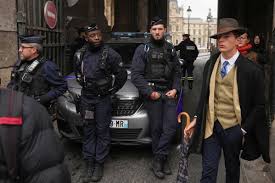Unraveling the Louvre Museum Robbery: An Art Heist Retold

Introduction
The Louvre Museum in Paris, a world-renowned institution housing some of the most famous art pieces in history, has been the subject of numerous thefts over the years. The most notable incident occurred in 1911, when the iconic painting, the Mona Lisa, was stolen. This incident not only raised questions about the museum’s security but also highlighted the lengths to which art thieves will go to acquire priceless works. The significance of art security today is paramount, given the rise in art crime worldwide.
Details of the Incident
On August 21, 1911, an Italian handyman named Vincenzo Peruggia orchestrated the heist, believing he could return the painting to Italy as a patriotic act. Peruggia, who had previously worked at the museum, cleverly suited up as a museum employee for the day, hiding the Mona Lisa under his clothing. He managed to avoid detection by utilising the museum’s closure on Mondays as a cover, allowing him unrestricted access on the day of the theft. After the theft, Peruggia concealed the painting in his apartment for over two years.
The theft did not go unnoticed for long, however. The absence of the Mona Lisa was quickly recognised, prompting a widespread search. Investigations led to various leads, yet the painting remained missing until Peruggia attempted to sell it in 1913 to a dealer in Florence, Italy. This action eventually led to his arrest and the painting’s return to the Louvre.
Impact and Significance
The robbery of the Mona Lisa had significant implications for the world of art crime and museum security. It catalysed severe reforms in how artworks were protected. Following the incident, measures such as improved surveillance, stricter access controls, and enhanced staff training were implemented in art institutions globally. The heist also solidified the cultural significance of the Mona Lisa, resulting in a surge in its popularity and an influx of visitors to the Louvre in the years that followed.
Conclusion
As art theft continues to pose threats to museums around the world, the theft of the Mona Lisa remains a cautionary tale that underscores the importance of security protocols in the art world. In recent years, various instances of art heists have further highlighted the vulnerabilities faced by galleries. Learning from historical incidents like the Louvre Museum robbery becomes critical for preventing future art crimes, ensuring that priceless cultural heritage remains secured for future generations to appreciate.


